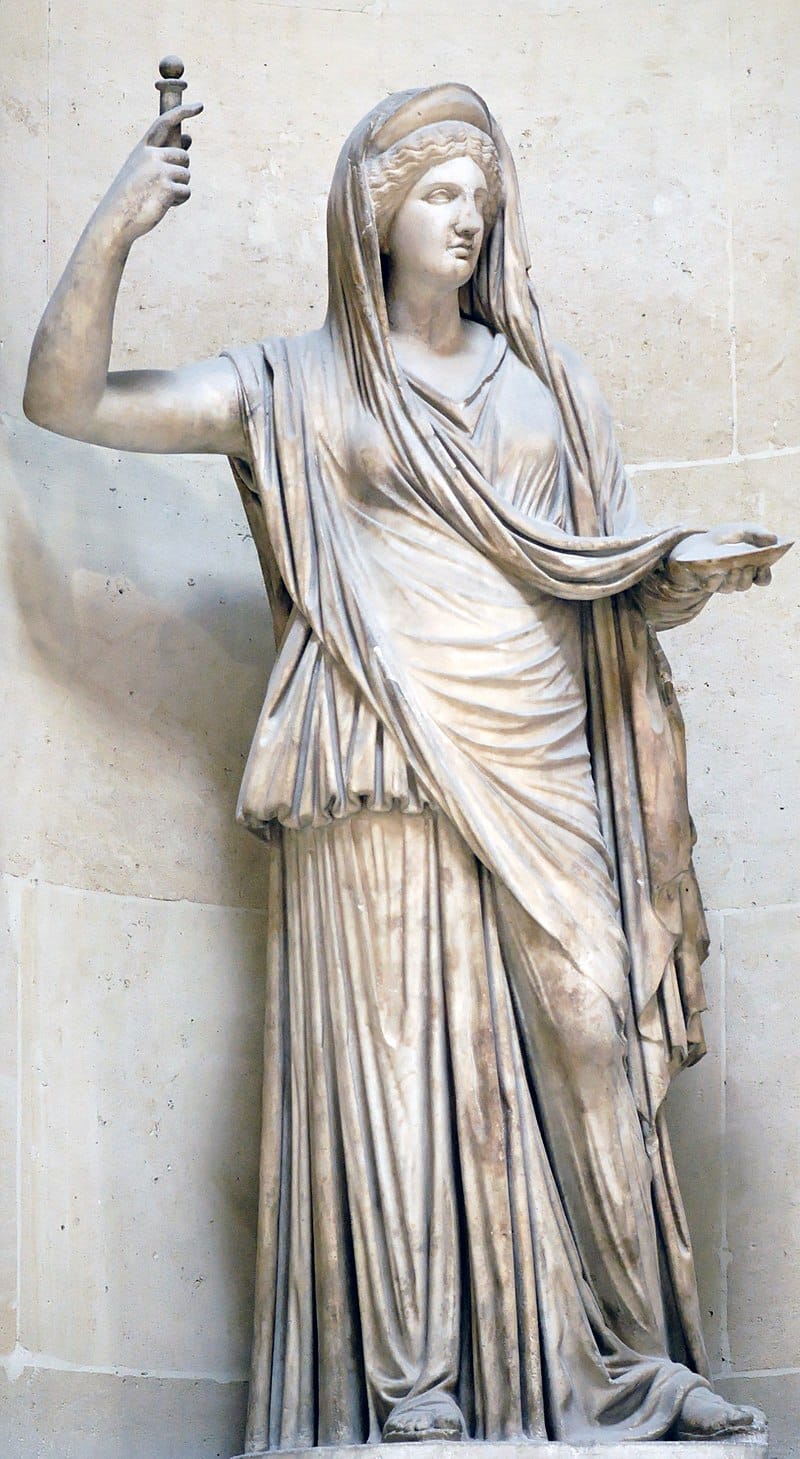Hera, the Greek Goddess of women, is believed to have dominion over marriage, family, and childbirth in Ancient Greek religion and myth. One of the Mount Olympus Gods and the sister-wife of Zeus. She is the daughter of the Titans Cronus and Rhea. Hera rules over Mount Olympus as queen of the gods. A matronly figure, Hera served as both the patroness and protectress of married women, presiding over weddings and blessing marital unions. One of Hera's defining characteristics is her jealous and vengeful nature against Zeus' numerous lovers and illegitimate offspring, as well as the mortals who cross her.

Jump to:
Hera Greek Goddess: Family and Marriage
Hera is the sister of Zeus and the daughter of Cronus and Gaia. She was vomited back to life after Zeus poisoned Cronus.
Hera resisted Zeus for a long period of time. Eventually, he was able to deceive and impregnate her. The two married, and their marriage would be tumultuous. Unlike Zeus, Hera was not promiscuous, and although she was beautiful, there was not a human or god that would come near her and face the wrath of Zeus. There were two that tried, and one was condemned to eternal sleep, and the other was tied to a perpetual wheel of fire.
However, Zeus would not be rewarded for his deceit. Hera would be a thorn in his side.
Hera Greek Goddess: A Vengeful Wife
Hera Challenges Zeus: Zeus was brutish and cruel to everybody. Incapable of bearing this, Hera plotted a revenge plan with Poseidon, Athena, and possibly a few other gods. She drugged Zeus, and they bound him on his bed while stealing his thunderbolt. Thetis, however, summoned Briareus, and he managed to quickly untie Zeus, who was, subsequently, merciless to the main schemer: he hung Hera from the sky with golden chains. In order to get released from the chains, she swore to never rebel against Zeus again. That is why she directed her anger towards his lovers and their children.
Semele: One of the first casualties in the Zeus and Hera marriage was Semele. Hera tricked Zeus into showing himself in all his glory. When he did, it incinerated Semele since mortals could not be in the same presence of a god's full form.
Callisto: she turned Callisto into a bear after the latter gave birth to Zeus’ child, Arcas. After some time, just as Arcas was about to unwittingly kill his mother, Zeus placed Callisto and her son in the sky as the constellations Ursa Major and Ursa Minor, the Big and the Little Bear.
Io and Argus: Hera saw a lone thundercloud and raced down in an attempt to catch Zeus with a mistress. Zeus saw her coming and transformed his new bride, Io, into a little snow-white cow. However, Hera was not fooled and demanded that Zeus give her the heifer as a present. Zeus could not refuse his queen without drawing suspicion, so he had to give her the beautiful heifer.
Once Io was given to Hera, she tied her to a tree and sent her servant Argus to keep Io separated from Zeus. Argus is a loyal servant to Hera, and he has immense strength and one hundred eyes all over his body. It was not possible to go past Argus since he never closed more than half his eyes at any time. Zeus was afraid of Hera's wrath and could not personally intervene, so to save Io. He commanded Hermes to kill Argus, which he does by lulling all one hundred eyes into eternal sleep. In Ovid's interpolation, when Hera learned of Argus' death, she took his eyes and placed them in the plumage of the peacock, her favorite animal, accounting for the eye pattern in its tail and making it the vainest of all animals. Hera, furious about Io being free and the death of Argus, sent a gadfly to sting Io as she wandered the earth. Eventually, Io made it to Egypt. The Egyptians worshiped the snow-white heifer and named her the Egyptian goddess Isis. Hera permitted Zeus to change Io back into her human form under the condition that he never look at her again. Io, the goddess-queen of Egypt, then bore Zeus' son as the next King.
